"THE SHORTENING WINTER'S DAY"
by Scottish painter Joseph Fahrquarson
(This painting has become an iconic Christmas card image)
It's Christmas Eve morning, and although it is sunny right now, a fierce winter snowstorm is roiling this way - oddly from the East out of Minnesota - and is predicted to turn into a blizzard by tomorrow morning. We may be snowbound for several days, unable even to celebrate with my sister's family just five miles away.
On this night, it is a tradition in the Celtic world to put candles in the window to light the way for strangers. Having grown up on the prairie, I know just how welcoming a light can be in the middle of a raging blizzard.
In Scotland, this night is called Oidche Choinnle, or the Night of Candles. Candles were placed in every window to show the way for the Holy Family on Christmas Eve. Shopkeepers gave their customers Yule candles as a symbol of goodwill, wishing them a "Fire to warm you by and a light to guide you."
In addition to candles, Scots illuminate their holiday world with other kinds of lights, including dazzling fireworks displays and huge bonfires.
Even though I am of Scottish descent, I didn't know about Oidche Choinnle. Fortunately, I learned about it this year from Mary at "Celtic Dreamscapes" in a post dated Dec. 12: http://www.celticdreamscapes.blogspot.com/
In fact, I didn't think that the Scots had any Christmas customs. Author Diane MacLean explains why Scottish Christmas traditions "are – to say the least – a little on the patchy side. There are some great pagan ideas, first-rate medieval treats, but then there is a huge yawning chasm, a Christmas-free zone until the middle of the 20th century until it all came back into fashion.
"The reason for this dearth of Christmas cheer is that Scotland in the mid-16th century had its very own Grinch. Yes, just like the character in Dr Seuss's book who stole Christmas, John Knox and the newly reformed Church of Scotland cancelled festive season. They forbade anyone to celebrate this erstwhile season of goodwill, hounded those who broke the embargo and cast a gloomy December shadow that stretched down through the centuries."
Strangely enough Christmas was banned for a religious reason. There was a fundamentalist view of Christianity held in Scotland at the time and therefore it was believed that if something wasn't in the Bible then it shouldn't be celebrated.
In 1574 people in Aberdeen were charged and fined for "playing, dancing and singing carols," on Yule Day.
The devouring of mincemeat pies had been a favorite Christmas tradition dating back to medieval times. (Anyone anticipating today's fruit and spice pastry would be in for a shock, as the mincemeat pie back then also contained beef, and indeed anything that came to hand.) This would be baked up in a huge wheel to feed neighbors and visitors.
By 1583 the Church of Scotland forbade bakers from preparing these pies. Anyone found baking them would be punished, or as more often happened, encouraged to inform on the customers who ordered them. In order to fox the Church, mincemeat pies became smaller and easier to hide.
The people of Scotland found a way to continue their holiday merrymaking without breaking church rules. Writes MacLean, "We canny Scots, unwilling to forego a good party, simply moved the traditions a week along. From this came the Scottish emphasis on Hogmanay (New Year's).
The ban on Christmas in Scotland continued for 400 years! It was not recognized as a public holiday in Scotland until 1958 and up until then people continued to work on that day. Even now, most of the celebrations take place on New Year's Eve.
But after doing a little research I learned that the Scots do indeed have a few other Christmas traditions, customs and legends in addition to Oidche Choinnle.
On a cold mid-winter eve, a large man in a hooded cloak visits a cottage in the hills. He sits a while by the fire, swaps stories and shares hospitality. When he heads back out into the dark, the folk who live there find he has left behind gold, or food or other gifts. No, it's not Santa. It's Jol(or Jul), pronounced with a "y" for the "j" sound. From this Scandinavian mid-winter observation comes the Scottish Yuletide.
There used to be a long standing superstition that one absolutely had to keep the fire going in the fireplace on Christmas Eve. If not, the spirits that were roaming around outside would climb down the chimney.
An old Scottish belief says that early on Christmas morning all bees will leave their hives, swarm and then return. Many old Scots tell tales of having witnessed this happening. One possible explanation to this behavior is that bees are protective of their hives so if there is unexpected activity they will want to check it out to see if there is any danger. As people were often up and about on Christmas Eve observing various traditions or just returning from the night services, the bees would sense the disturbance and come out of their hives to check for danger.
There are a number of ancient divination customs associated with Scottish Christmas tradition. One involves checking the cold ashes the morning after the Christmas fire. A foot shape facing the door was said to be foretelling a death in the family, while a foot shape facing into the room meant a new arrival.
Another divination was the ceremonial burning of Old Winter, the Cailleach. A piece of wood was carved to roughly represent the face of an old woman, then named as the Spirit of Winter, the Cailleach. The Cailleach was placed onto a roaring fire to burn away. All the family gathered to watch Old Winter burn to the end. The burning symbolized the ending of all the bad luck and a fresh start.
Like all Celts, the Scots cut mistletoe, holly and other evergreens to decorate the house. They brought in the Yule log for light and warmth. During the summer a log was cut and dried, usually from a birch or rowan tree. On Christmas Eve, the dried log was brought into the house and circled around the kitchen three times. The Yule celebrants made a toast to the log, and placed it in the fire to burn. The last of the Yule log was saved under the mistress' bed to kindle next year's log, and bits and piece of it were kept for good luck.
Along with dancing and bagpipe music, food was an important part of the Scottish Christmas celebrations. Bannock cakes, made of oatmeal, are essential to the holiday. The Scottish version of the traditional Christmas pudding is called a clootie dumpling. It is made from fruits, suet, flour, sugar, and spices and sometimes contains a silver coin for good luck. The clootie dumpling is served hot with syrup or a custard sauce for the children and whisky-, rum- or brandy-flavored custard sauce for the adults.
Black bun is another traditional holiday treat. Originally called a Twelfth Night Cake, black bun is a very rich fruitcake, filled almost solid with fruit, almonds and spices, and bound together with plenty of whisky. The stiff mixture is put into a cake tin lined with a rich short pastry and baked.
Sun cakes are a legacy from Scotland's close associations with Scandinavia. Sun cakes are baked with a hole in the center and scored lines radiating from the center. These lines represent the rays of the sun. This pattern is now found on the modern Scottish shortbread and has been misidentified as slices markings! (That's what I always thought they were!)
Presents were rarely more than a sugar mouse and an orange in Auld Scotland, but relatives would tramp the hills in the dark and the rain just to get to their wee bothy. Father would have slaughtered the pig they'd been fattening since springtime. The aunties, uncles and cousins would crowd around the fire telling stories and singing hymns.
The term for Merry Christmas in Scotland is "Nollaig Chridheil", and that is what I wish to you today. And I hope that if you had to travel today, there is an Oidche Choinnle waiting for you. And if you are cozy at home, please light a candle for some weary traveler.














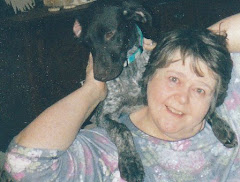



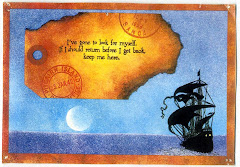














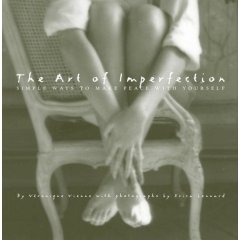
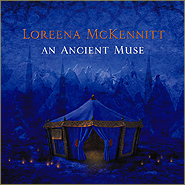

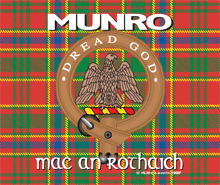
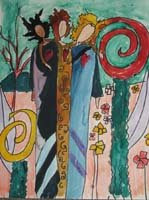

12 comments:
Happy holidays to you and yours. I do the candles in the window, only I use the battery operated kind. Great post as usual.
Mary
Dear Julie, you are such a sweetie, i got such a lovely suprise when i saw my picture on the post below, thank you x As always there is so much fascinating information to learn here, i had a giggle to myself, here i am sitting in scotland and i wing all the way over to your blog to learn more about scottish things, thank you x i do so hope that you and yours have a precious christmas full of happiness and that the new year is good to you, with love & hugs x ruthie x
Merry Christmas,Julie!
I hope you don't lose electricity with the storm!!!
I LOVE this post! You have done a beautiful job of telling us about traditions from an area of the world which appeals to me!
I hope you stay warm, and like the Scots a hundred years or so ago, maybe you can celebrate with your sister in a few days!
Another post full of interest Julie. I din't realise that Scotland did have Christmas Day as a holiday until as late as 1958. I have to say that I'm glad I din't live in John KNox's Scotland, it must have been a cheerless place!
Julie, thank you so much for this glimpses of tradition and history. I love reading and learning of the Celtic practices so very much. Ruthie made me giggle.
thanks Julie,
I hope your Christmas was lovely.
I didn't know all these things about the scots, I am so remiss with my history of Scotland. I have focused all my interest on England. I will make amends!
thanks again and Nollaig Chridheil to you and yours!
Happiest of Holidays!!!!
Julie, I've just been reading through all your beautiful Christmas posts. You always put so much time and effort into what you do here. I have been waging a war against some kind of flu or cold "bug" and haven't been around much to comment. I hope your holidays were wonderful and filled with family and friends and lots of good food!!
Dearest Julie - I'm hoping you aren't buried under all that snow -but I fear your Christmas Day was upset (saw your comment on Nina's blog!).
After exciting days in New York it was a bit of a let down returning to town. DH has a terrible cold which I'm hoping to skip, and the family weren't exactly fun! Truthfully I'm going to be happy when it's all over and I can have a couple of months tucked up here in the cottage.
Thanks for all the interesting posts you share with with us dear friend - you are such an amazing writer.
Best wishes for the coming year - and stay warm.
Dearest Julie
Thinking of you up there in that damned freezing cold.... Brrrr.
Hope you are keeping cozy and warm.
My love to you.
xx
When I was a little girl, my Grandmother would put a candle in the window during the winter months. She was half Irish on her Mothers side, and English. I wish that I had paid more attention to some of the things she did, it could have been traditions lost.
Love your post and the pictures too. Happy New Year!
Hey Julie,
We are freshly arrived back home from our trip to New York which was fabulous by the way!!
I loved your article and loooooved your little Scottish cards/postcards. So cute!
When I was in Ireland they told me in the winter they always put little candles in the windows for Christmas!
My husband's family always did this same thing. So we do it now as well and have for years. :~)
We have little battery operated ones...no cords to tangle with.
I will write you more later.
"Joyeoux Noel" and HAPPY Christmas to you!!
Joyce
Post a Comment